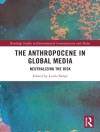In addition to introducing readers to the field of family-based prevention science, Family-Based Prevention Programs for Children and Adolescents highlights the distinctive contributions of a set of exemplary programs in terms of their foundational theory, design, delivery mechanisms, performance, and unique opportunities for future research. It is organized into three sections to orient readers to: the existence of different types of family-based programs targeting families with children of different ages; the strategies and challenges that arise when attempting large-scale dissemination of prevention programs; and, the emerging innovations that promise to push the field forward into uncharted territories. Each chapter is written by a preeminent program developer, including:
- Gene H. Brody
- Richard F. Catalano
- Patricia Chamberlain
- Thomas J. Dishion
- Marion S. Forgatch
- Kevin P. Haggerty
- Cleve Redmond
- Matthew R. Sanders
- Richard L. Spoth
- Carolyn Webster-Stratton
Contributors review the state of the research and then provide a summary of their own program, including research and dissemination efforts. They also discuss take-home lessons for practitioners and policymakers, and provide their view of the future of program development and research in their area. As an important signpost signifying the noteworthy achievements of the field to date, as well as an arrow pointing the field toward significant growth in the future, this book is a must-have primary resource for graduate students in developmental or clinical psychology, counseling, family sciences, social work, or health policy, and an essential guide for practitioners and policymakers in the field of family-based prevention, family service delivery, or public health.












